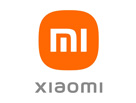What is a Conversational User Interface CUI?
ChatGPT could invoke the right roles at the right time (hopefully with system status visibility). Conversational interfaces are cheap to build, so they’re a logical starting point, but you get what you pay for. If the interface doesn’t fit the use case, downstream UX debt can outweigh any upfront savings. Despite these advances, we still haven’t found a perfectly intuitive interface — the troves of support articles across the web make that evident. Yet recent advances in AI have convinced many technologists that the next evolutionary cycle of computing is upon us.
You can learn what works, what doesn’t work, and how to avoid common pitfalls of designing chatbot UI. Many customers try to talk to chatbots just like they would to a human. Meaning, a conversation is a mix of both verbal and non-verbal communication. A chatbot Chat GPT is built to understand context based on conversational flows and speech pattern recognition not based on intonation, facial expression, eye-contact, gestures or posture of the user. In other words, the non verbal communication is not factored into calculations.
- The shop assistant used pre-defined scripts to respond to customer queries.
- The system can also redirect to the human operator in case of queries beyond the bot’s reach.
- For a conversational UI which is not using AI to interpret user’s answers, this is the most challenging part of writing a script.
- All this helps in making the use and working of interactive UI clear to the user.
Granted a new technology and an entirely new field for design is quite daunting. It’s also worth bearing in mind that just because it’s got ‘design’ in the title, it doesn’t necessarily mean that you need to pursue it. The first thing I realised once I conversational user interface started experimenting was that it’s probably more an opportunity for someone who has a deep understanding of language and human behaviour.
This, in turn, generates an emotional connection to your products or services. For example, Yellow.ai’s conversational AI platform enables personalized and meaningful interactions, which creates strong bonds with customers, encouraging their continued patronage. The designer builds the architecture of what the intended users can do in the space, keeping in mind the AI platform’s capabilities, the user’s needs and finally, the technical feasibility.
It can automate internal company processes such as employee satisfaction surveys, document processing, recruitment, and even onboarding. Chatbots give businesses this opportunity as they are versatile and can be embedded anywhere, including popular channels such as WhatsApp or Facebook Messenger. You can foun additiona information about ai customer service and artificial intelligence and NLP. ChatGPT and Google Bard provide similar services but work in different ways. Learn how to build bots with easy click-to-configure tools, with templates and examples to help you get started. As an autonomous, full-service development firm, The App Solutions specializes in crafting distinctive products that align with the specific. objectives and principles of startup and tech companies. It should be noted that this challenge is more of a question of time than effort.
ChatGPT vs. Bard
CUI refers to a modern form of human-computer interaction in which the medium switches from graphical elements (buttons and links) to conversational elements (emotions and natural language). For example, rather than navigating through an interface or website to find information, users can just say or type what they want. Third, users can leverage chatbots to operate several business applications at once. For example, users can invoke multiple chatbot actions in conversation with team members at the same time.
By introducing clarity to your conversational interface, Virji advised that you can ensure customers spend less time trying to figure out what you mean, and more time doing the things they want. For a conversational UI which is not using AI to interpret user’s answers, this is the most challenging part of writing a script. I believe that setting the goals and abilities of a conversational interface is crucial for making it more intelligent. The chatbot should have a clear mission and be able to respond with clarity as to whether it can be of help or not. This delimitation is vital when the conversational interface is asked to do things that it just wasn’t trained for. When embarking on a chatbot development journey, it is important to choose the right chatbot generator that aligns with your project requirements.
What Are Conversational Interfaces? The Basics – CX Today
What Are Conversational Interfaces? The Basics.
Posted: Fri, 11 Dec 2020 08:00:00 GMT [source]
Traditionally, websites have served as digital billboards, showcasing information in a structured, albeit static, manner. Visitors skim through text, images, and videos, with the occasional pop-up or chatbot nudging for interaction. The extent of user engagement has largely been confined to these elements. However, the conversational interfaces could very well reshape this landscape, morphing websites from static pages to dynamic dialogues. ChatGPT only hints at the expansive impact to come as interfaces evolve from rigid menus and forms to free-flowing, adaptive conversations.
It allows customers to manage their accounts, report fraudulent activity or lost cards, request PIN changes, and use such interfaces. Conversational user interfaces aren’t perfect, but they have a number of applications. If you keep their limitations in mind and don’t overstep, CUIs can be leveraged in various business scenarios and stages of the customer journey. Secondly, they give businesses an opportunity to show their more human side.
The lack of persistent signifiers for context, like roleplay, can lead to usability issues. For clarity, we must constantly ask the AI’s status, similar to typing ls & cd commands into a terminal. Experts can manage it, but the added cognitive load is likely to weigh on novices. The problem goes beyond human memory, systems suffer from a similar cognitive overload. Due to data limits in their context windows, a user must eventually reinstate any roleplay below the system level. If this type of information persisted in the interface, it would be clear to users & could be automatically reiterated to the AI in each prompt.
The chatbot allows them to converse with different personalities like Chef Robert, Renée the Driver, and Officer Ada. The user can choose their preferred personality and language (French, Spanish, and German) and converse with it to quickly pick up the language. To get started with your own conversational interfaces for customer service, check out our resources on building bots from scratch below. Conversational UI works by inputting human language into something that can be understood by software. This can be accomplished with Natural Language Processing (NLP) and by training the program on language models. Conversational flows, like those used in customer service bots, can also be easy-to-deploy applications that can be built out manually.
Why do brands need conversation design?
It’s easier if the conversation is in English as English syntax is relatively simple. However, in many languages you should be able to create more than one option of a message (phrase) by replacing one word with another. Also, a script designer should be able to specify the places for user’s answers, options, etc.
- The best way to track data is by using an analytic platform for chatbots.
- This allows chatbots to provide personalized and relevant information to users, making the conversation more meaningful and effective.
- And this is critical, because it ensures a company’s customer service is available all the time.
- Chatbots are a commonly used form of conversational UI in customer service.
- “Chatbot” is currently one of the most common buzzwords in the industry.
You now have the knowledge to create your own bot and gain the most of it. Going with a chatbot is a great way to increase your business productivity and reduce costs. While providing continuous support and customer satisfaction, Chatbots are also great tools to collect and analyse data. As language understanding and machine learning technologies continue to evolve, conversational interfaces have the potential to understand not only user input but also their surroundings.
Don’t use ambiguous language, technical terms, abbreviations, or acronyms and only show the what user wants and prioritize information according to that. It is good if we show some suggestions to the user while interacting so that they don’t have to type much. Also, it is a good practice not to allow users to type much and get as much information from the system. Also, users expect that if some information is said once, it shouldn’t be asked again and expect that it should remember that information for the rest of the conversation. People mumble, make mistakes, hesitate or lose the thread when speaking.
Chatbot conversational interface is also critically observed from all those users who interacted with them. Plus, it can be difficult for developers to measure success when using conversational user interfaces due to their inherently qualitative nature. Thus, one of the core critiques of intelligent conversational interfaces is the fact that they only seem to be efficient if the users know exactly what they want and how to ask for it. On the other hand, graphical user interfaces, although they might require a learning curve, can provide users with a complex set of choices and solutions. As opposed to chatbots, which can be considered text-based assistants, voice assistants are bots that allow communication without the necessity of any graphical interface solely relying on sound.
Applications worth evaluating may include B2B interactions with suppliers or customers, engaging recruits, serving internal users with IT or HR needs, and empowering finance departments. They may well come to see chatbots as a preferred means of interacting with co-workers and enterprise applications alike. As technology continues to advance, the future of AI chatbots in conversational interfaces is incredibly promising.
This level of personalization creates a seamless and engaging experience for users, increasing customer satisfaction and loyalty. Conversational UI is an interactive technology replicating conversations between a user and a computer or digital system. This type of interface combines artificial intelligence (AI), natural language processing (NLP), and augmented reality (AR). As a result, it enables people to interact with smart systems using simple voice commands. As NLP and generative AI advance, conversational interfaces are becoming more capable. With better comprehension of preferences, context, and sentiment, they can handle increasingly complex interactions.
Few things are worse than talking to a computer that communicates like a brick wall. However, people don’t like it when a bot keeps saying sorry – it feels very repetitive, and is also a conversational dead end. Virji gave some tips in her presentation on how to keep the apologies from your bot to a minimum. As an experimental alternative, the old messages can fade out and as a result scrolling is no longer necessary. I know the usable aspect of such solution is questionable, but take a look at it from different perspective — such solution reflects the nature of a real conversation. When talking with someone you also don’t have access to the exchanged information all the time.
They are trained to understand vocal commands and interact with people. They create a human-centric, inclusive, and empathetic experience in this process. Chatbots and automated personal assistants are a significant function of conversational user interfaces, but they certainly aren’t the only function. Conversation design significantly contributes to the building of brand loyalty through a multi-faceted approach. By creating consistency in communication, it engenders a dependable and predictable user experience, critical for establishing trust.
The emergence of text-to-image technology lays the foundation for a new, interactive shopping experience, seamlessly blending conversation with visualization. Harnessing the power of Generative AI, we’re is inching towards a future where content on web pages is dynamically generated to cater to the unique profile of each visitor. Where images, headlines, and perhaps the entire page design morph in real-time, offering a tailored experience. Today, standing out in the crowd necessitates a level of personalization that resonates with the audience on a personal level. As users traverse the digital realm, every click, swipe, every search, and every interaction is a breadcrumb that reveals a fragment of their preferences and behaviours.
Your job is to identify those that are the most common and most important (to the customer).Create 2-3 specific user personas and their journeys that describe your best customers. Answering these questions helps you form specific user personas – short descriptions of most likely (or ideal) individual customers. You should not have to teach the users what to do, the action should be clear through the conversational principles. These are the best possible options to reply to the queries put forth by the users. If you want to make your bot more lively and human-like, it is good to give the bot some personality and some level of emotion.
Human language technologies are more advanced, and the time is right for active users to want to talk to robots. In the clinic I attended, they, unfortunately, only focused on chatbots as an example of conversational design. And while I understand that virtual assistants and chatbots are probably the first thing people https://chat.openai.com/ think about when you talk about conversational design, they are actually only a small part of the discussion. Several tools and platforms are available for conversational design, including Yellow.ai’s Dynamic Conversation Designer, Google’s Dialogflow, Microsoft’s Bot Framework, IBM’s Watson Assistant, and many more.
AI chatbot generators have revolutionized the way businesses interact with their customers. By harnessing the power of AI, companies can automate customer service processes, streamline communication, and provide round-the-clock support. These chatbots can handle a wide range of queries, from basic FAQs to complex troubleshooting, freeing up human agents to focus on more strategic tasks. The easy-to-use conversational user interface of Skyscanner is effective in providing relevant details to all customers. In just a few years since the chatbot’s introduction, Skyscanner managed to pass one million traveller interactions with chatbots across all platforms by 2019. While this new conversational interface innovation might surprise you, the trend of chatbots being used for health purposes is really taking off.
This chatbot interface seems to be designed for a very specific user persona in mind. Its creators recognize their user base, understand customer needs, and address pain points of their users. Wysa uses soft and pastel colors, a friendly therapist penguin avatar, and many extra tools for managing your mental wellbeing. Chatbot UI and chatbot UX are connected, but they are not the same thing. The UI (user interface) of a chatbot refers to the design and layout of the chatbot software interface. The UX (user experience) refers to how users interact with the chatbot and how they perceive it.
There are two common types of conversational interfaces relevant to customer service. As customers, many of us have had conversations with chatbots—they’re often our first point of contact when we have a question about our service or account. But we’ll soon be interacting with them at work too, as companies adopt chatbots for internal enterprise and B2B applications. A conversational interface can distill a user’s entire experience with your brand into a few quick messages, so it’s important the conversation leave a good impression. In order to create a memorable, personal experience, your interface needs to have its own personality. Customers often lose trust in general chatbots implemented by enterprises to deliver basic services online due to their limited capabilities and inability to provide personalized, relevant responses.
The users should know about the bot’s capabilities and incapabilities. Like when a user starts to interact with the bot, he might not know what to do with this. If it is a voice assistant, it must inform the user like Hey, I am XYZ. Or, I could help you with providing the details of our products and it’s availability. So our chatbots should be clearly defined with the tasks it is going to perform. It should also not be overloaded with too much information or tasks so it couldn’t do anything well and confuse customers with too many choices.
Their success is a function of maximizing data collection touchpoints to optimize predictions. Accuracy gains in predictive output tend to result in better user retention. So good data compounds in value by reinforcing itself through network effects. Aside from the cognitive cost of usability issues, there is a monetary cost to consider as well. Every interaction with a conversational interface invokes an AI to reason through a response. This requires a lot more computing power than clicking a button within a GUI.
As we know, designing a successful conversational UI requires strategic planning and understanding of the behavior of users. In my previous Smashing article, I explained the concept of algorithm-friendly interfaces. They view every interaction as an opportunity to improve understanding through bidirectional feedback. They provide system feedback to users while reporting performance feedback to the system.
Building a conversational interface is like you create a chatbot with a human conversation pattern so it is easy to understand for bot the actual objective of your business. However, the chatbot is cost-effective and incredibly grabs most of the industries toward itself as people badly need to entertain customers around the clock. In recent months, hundreds of consumer brand companies have deployed chatbots, often with very limited functionality.36 This may seem like a fad—and to a degree, it may be. But cognitive technologies are continually improving, along with the ability to create ever more useful conversational interfaces.
VUIs (Voice User Interfaces) are powered by artificial intelligence, machine learning, and voice recognition technology. ServiceNow’s conversational interface can play a vital role in fixing this issue by offering a highly customizable design and topic-specific expertise. With ServiceNow, enterprises can tailor their chatbot to specific industries or use cases, ensuring that it understands the unique requirements of customers and provides accurate, context-aware responses. This level of customization not only enhances the customer experience but also rebuilds trust by delivering more effective and personalized service. A conversational user interface (CUI) is a digital user interface that uses technology to simulate an organic conversation with a real human.
Progress is the leading provider of application development and digital experience technologies. With conversation, it is amazing what we could do with it when it comes to AI. Now as you said here, there are multiple different platforms to where they are used. To me, I think that a voice assistant would be conversational interface chatbot the most important as you could use it as a personal translator of some sort. To learn more about conversational AI types you can read our In-Depth Guide to the 5 Types of Conversational AI article. Remsha MoghisRemsha Moghis is a content writer at Botsify, a platform where building a bot is trouble-free.
Even simple options like “Yes” and “No” make an experience feel dramatically simpler. Overall, said Virji, these are all things that we know how to do, and in a human conversation, we do them naturally. The secret to creating an effective conversational interface is just to be conscious of them, and build them in. Conversations can take many directions depending on a user’s input and preferences. Conversations often start off generic but as they progress they quickly become unique experiences. ” could get completely different answers depending on your role in the company (Johnson, S. Chatbots, Conversational Interfaces, and the Rise of Messaging Platforms).
Essentials to Design Chatbot User Interface
These kinds of interactions differ from the vast majority of chat assistant conversations that happen in the chat window of a corporate website such as Facebook. Conversational assistants create an augmented reality that many have come to expect when reaching out to customer digital services teams. In addition, maintaining privacy, ensuring inclusivity, and meeting ethical considerations can be challenging. The concept of conversational design is about looking at human conversation as a model for all interactions with digital systems.
According to the latest Adobe Digital Economy Index, global eCommerce sales are predicted to reach $4.2 trillion in 2021 and U.S. consumers account for close to one-quarter of that figure. In response to the surge in online sales, eCommerce companies are focusing on boosting brand loyalty and retaining customers. If we try to design the next abstraction layer looking forward, we seem to end up with something like a chatbot. What if we look at the problem backward to identify the undesirable outcomes that we want to avoid? While my previous focus was on content recommendation algorithms, could we apply this to generative AI?
For such cases, designing better conversation flows and better copy can be your saviour. If you have understood the first point we made, you will understand the role that personality plays in this case. Do you want to satisfy customers with your services or do you want to engage them with conversations? This will contrive by the way you address your conversational interface needs.
If you already have an engaged user base, address a common concern they are all facing. It will engage your users more and they might also explore more options you provide with the bot. They should be certain that they can depend on your bot for solving said issue in the future. Most industries will employ AI Chatbots or some sort of AI integration by 2030, that alone must have you running to get your own chatbot or voice assistant.
AI chatbots for ERP: Assessing the benefits and tools – TechTarget
AI chatbots for ERP: Assessing the benefits and tools.
Posted: Wed, 20 Dec 2023 08:00:00 GMT [source]
The syntax of interaction shifts from clicks to phrases, from menus to dialogues. Every interaction point needs to be thoughtfully designed to ensure the conversation progresses smoothly and assists the user effectively. UI/UX design will be undergoing a profound transformation with the advent of conversational interfaces. The traditional design ethos, rooted in visual aesthetics and user-friendly navigation, is now intertwining with the dynamics of interactive dialogues. As websites and applications evolve to encompass more conversational elements, the role of designers too is expanding, bringing with it a suite of new challenges and opportunities.
Hopefully, these tips can help you create something that users will love, and you’ll be proud of. To plan out these interactions, Virji recommended writing sample dialogues and roleplaying conversations before you start coding your bot or voice agent. By doing this, you can clarify where you expect an interaction to go, normalise your bot’s responses, and understand where customers might encounter sticking points. What’s more, Cody is absolutely perfect for any conversational UI purposes, as he has a large library of pre-designed appearances we could use. I think soon companies will start to measure and optimize conversational UI conversion rates by testing different chatbot avatars.
How can we classify the intelligence behind conversational UIs?
Another pillar of a functional conversation is turn-taking.Seems obvious, yet many first-time bot designers forget to give users space to actually interact. The talk of and interest in conversational UI design is not entirely new. However, with the increasing ease with which we can create conversational experiences has opened this topic to a much wider audience. Customers no longer want to passively consume polished advertising claims. They want to take part, they crave to experience what your brand is about.
The widespread adoption of social media and messaging platforms has significantly influenced the evolution of CUIs. By integrating with these different channels, CUIs have expanded their reach and become more accessible to users. For example, Facebook Messenger and WhatsApp now support chatbot integration, allowing businesses to deploy CUIs on these platforms and interact with customers directly. By 2022, it is anticipated that AI chatbots will help save businesses over $8 billion.
Designers work with the intent of making conversational UI responsive to conversations. Typical UI design focuses on using visual influences to navigate interactions with a digital system. Despite the exciting prospects, challenges loom, particularly around data privacy and the accuracy of generated images. Ensuring a secure environment for users to share personal images and ensuring that the generated content accurately represents the product are hurdles that need addressing. Imagine landing on your favourite clothing website, and instead of the usual grid of apparel, you’re greeted by a friendly chat interface. “Hey there, wanna see how our new summer styles might look on you? Just upload a photo of yourself right here and we’ll show you, like right now!” it suggests.
With conversational experiences existing across platforms and devices from mobile to web to smart speakers and smart TVs, the spectrum extends from voice-only to voice-forward to intermodal and more. A conversational user interface(CUI) is a digital interface that allows users to interact with a product based on principles of real-life human communication. Merely saying, users don’t need to look in the graphical interface for the information.
They have all set up conversation-based interfaces powered by the AI chatbots that have come good to serve several business purposes. Chatbot takes its place in chat products and also serve as stand-alone interfaces to handle requests. For example (the simplest of examples), such a bot should understand that “yup,” “certainly,” “sure,” or “why not” are all equivalent to “yes” in a given situation. In other words, users shouldn’t have to learn to type-specific commands so that the bot understand them.
In addition to low discoverability, another similarity they share with command lines is that ideal output is only attainable through learned commands. We refer to the practice of tailoring inputs to best communicate with generative AI systems as “prompt engineering”. The name itself suggests it’s an expert activity, along with the fact that becoming proficient in it can lead to a $200k salary. Why are conversational interfaces so popular in science fiction movies? In a Rhizome essay, Martine Syms theorizes that they make “for more cinematic interaction and a leaner production.” This same cost/benefit applies to app development as well.
Chatbots and conversational UI are rapidly becoming popular across industries, transforming customer service and transforming user interactions. With the smart interface of your conversational flow, people love to interact with chatbots and get quick responses. Undoubtedly, the conversation user interface allows getting access to the major platforms to compete across the world. Since we are adopting AI-powered technology, they reduce workload and get maximum profits in less time. Chatbots conversational user interface greatly works to enhance user experience and engagement.
Erica also displays a message, “See what Erica can do,” which shows all its functions when clicked upon. This is extremely crucial, especially for conversations about mental health and stress. So, when you want to place an order with Dom, options like “Pizza,” “Pasta,” “Sandwiches,” etc., show up on the screen. Duolingo recently took conversational learning to the next level by introducing conversational lessons. This new feature offers practice with words and phrases used in real-life scenarios and will enable you to put those words together to form meaningful sentences. Duolingo understood that the most significant problem they would face would be helping users effectively learn a language.
The benefit of CUI is that the same interface can present information in completely different ways. User responses, preferences and CRM data can all be used to present a more segmented, personalized experience. So why would anyone want to talk to one of these things in the first place? Our traditional experience with chatbots and virtual assistants is that they are procedural, scripted and lack the context necessary to understand the intent behind what we are saying.
Duolingo’s chatbots and conversational lessons give the user the experience of having a conversation in reality. Duolingo is known for its conversational AI and conversational marketing strategies. Here are 5 of the top CUI’s and chatbots for business that cover all bases and provide a smooth and happy experience to all users. One way to gather data on user satisfaction is through success surveys that can be applied to chatbots.
Let’s talk about your logo, branding or web development project today! Avoid response repetition (mentioned false options), as this can quickly turn into a conversational dead end. Designing a tremendous conversational UI doesn’t mean that the bot will answer every single question every time.








